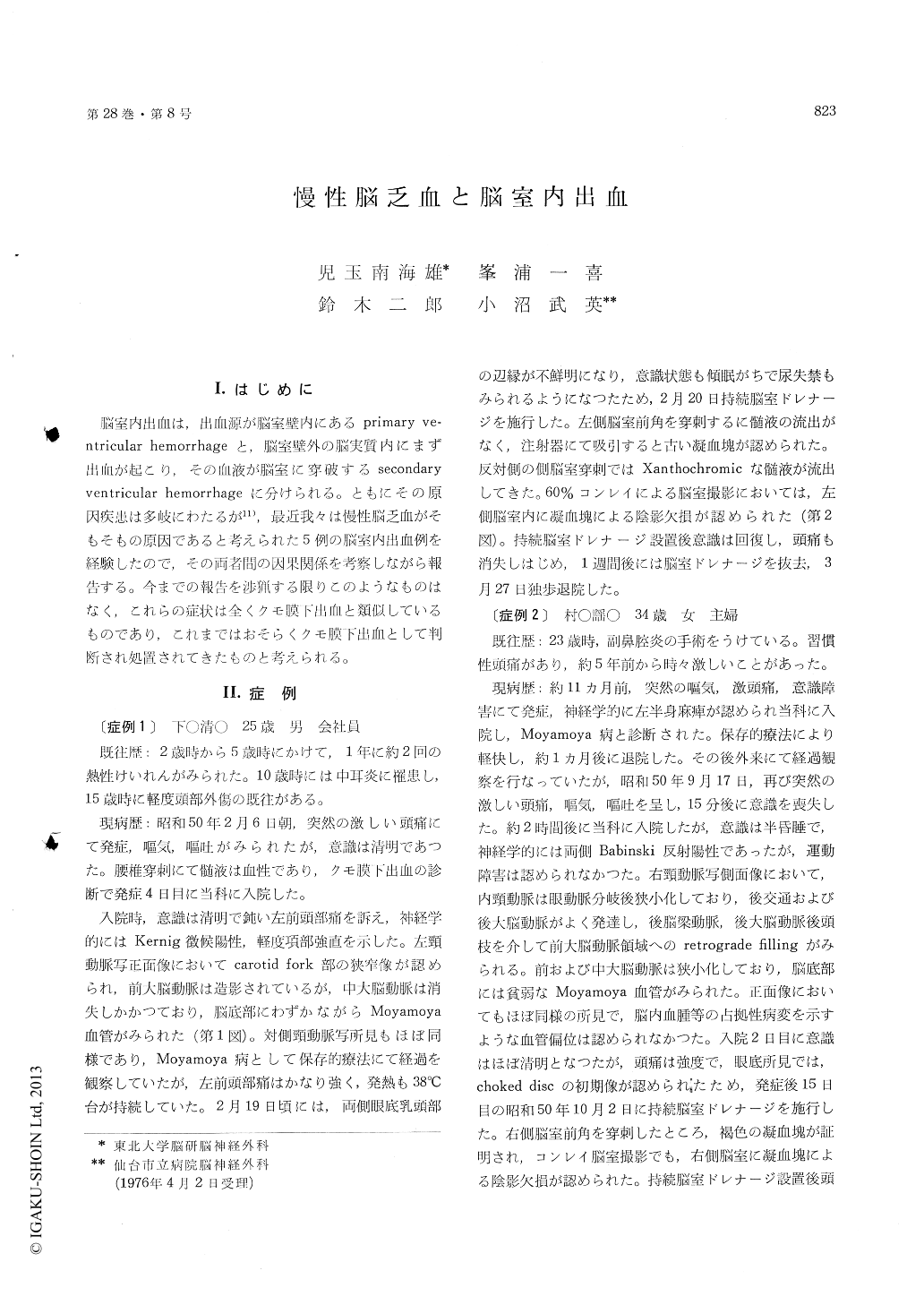Japanese
English
- 有料閲覧
- Abstract 文献概要
- 1ページ目 Look Inside
I.はじめに
脳室内出血は,出血源が脳室壁内にあるprimary ve—ntricular hemorrhageと,脳室壁外の脳実質内にまず出血が起こり,その血液が脳室に穿破するsecondaryventricular hemorrhageに分けられる。ともにその原因疾患は多岐にわたるが11),最近我々は慢性脳乏血がそもそもの原因であると考えられた5例の脳室内出血例を経験したので,その両者間の因果関係を考察しながら報告する。今までの報告を渉猟する限りこのようなものはなく,これらの症状は全くクモ膜下出血と類似しているものであり,これまではおそらくクモ膜下出血として判断され処置されてきたものと考えられる。
Five cases of ventricular hemorrhage are reported, of which principle cause was seemed to be due to chronic cerebral ischemia. Onset of symptoms in these five cases was similar to that of subarachnoidhemorrhage. Carotid angiogram revealed chronic stenotic and obstructive change of main cerebral artery in all of these cases. Three of them, which were the adult cases of Moyamoya disease, showed stenotic shadow in bilateral terminal portion of the internal carotid artery. In other two cases, stenosis and obstruction were found at M1 portion of the middle cerebral artery with some collateral vessels in this region.
Previously it was reported by us that aneury-smal shadow were found at the peripheral portion of the posterior choroidal artery in three adult cases of Moyamoya disease. In that paper our conclusion was as follows. All of the aneurysmal shadows were located close to the upper lateral edge of the lateral ventricle. As they disappered com-pletely on the follow-up study of the carotid angio-gram, they were considered to be the pseudo-aneurysm, which indicated the bleeding point in the brain tissue. After the hemorrhage, the blood penetraed into the lateral ventricle which was very close to the bleeding point. It was suspect that true symptom of the onset must be ventricular hemorrhage, although it has been believed to be subarachnoid hemorrhage.
Based on this conception, bleeding point of five cases was supposed to be the same region, namely the upper lateral edge of the lateral ventricle. On the study of vascular architecture in autopsied normal human brain by micro-angiography, arterial distribution is scanty in this area. If the circulatory disturbance occurs in the main cerebral artery, small infarctic focus is apt to be made there. In our five cases, chronic stenotic and obstructive changing of main cerebral artery was observed on the carotid angiogram. Therefore the existence of small infarctic focus due to chronic cerebral ischemia could be thought. Although the obvious mechanism is unknown yet, it was supposed that infarctic hemorrhage or bleeding from the small artery due to changes of arterial or venous pressure might occur and penetrate into the lateral ventricle.
It is proposed to add chronic cerebral ischemia to the already-known causes of ventricular hemorrhage.

Copyright © 1976, Igaku-Shoin Ltd. All rights reserved.


